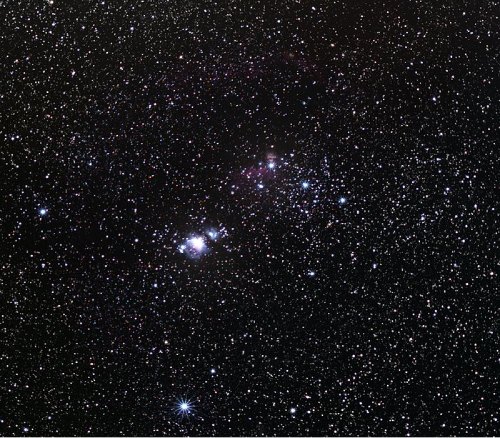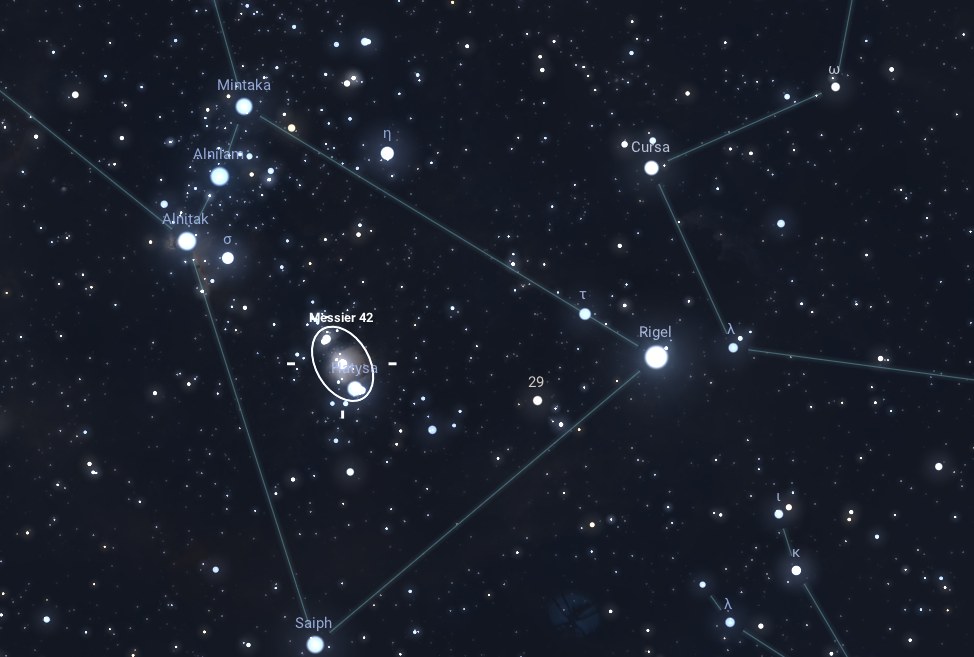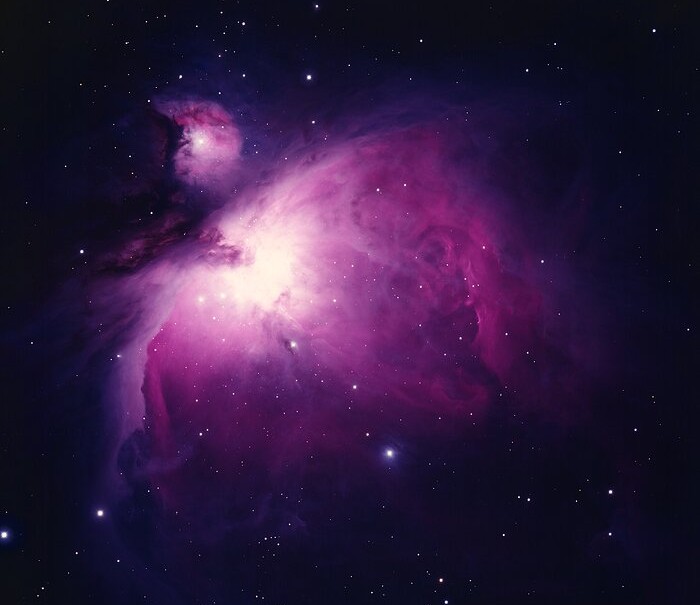The Orion Nebula, also known as Messier 42 (M42), is one of the most famous and easily recognizable nebulae in the night sky and a favorite target for astrophotographers. Known since ancient times, it was first noted by the Greek astronomer Ptolemy in the 2nd century AD and later cataloged by Charles Messier as Messier 42 in the 18th century.
Located in the constellation Orion, M42 is visible from both the Northern and Southern Hemispheres, making it accessible to stargazers worldwide.
Appearance and Composition
The Orion Nebula is a stunning emission nebula, visible to the naked eye as a faint, fuzzy patch of light below Orion’s Belt. Through binoculars or telescopes, it reveals intricate details, including glowing gas clouds, dark lanes of dust, and young stars embedded within the nebula. The nebula’s vivid colours, primarily pink and blue, are due to the ionization of hydrogen and other elements by the intense radiation from nearby stars.
Like many other emission nebulae, the Orion Nebula primarily consists of hydrogen gas, along with other elements such as helium, oxygen, sulphur, and nitrogen. These elements are essential for the formation of stars and planetary systems within the nebula.

Star Formation
M42 is a stellar nursery where new stars are actively forming from the surrounding gas and dust. It is one of the closest regions of massive star formation to Earth, making it an invaluable laboratory for studying the processes of star birth and evolution. The Trapezium Cluster, a group of hot, young stars, is located at the heart of the nebula and is responsible for illuminating and ionizing the surrounding gas clouds.
These bright young stars, particularly the massive O-type stars in the Trapezium Cluster, emit intense ultraviolet (UV) radiation. This radiation ionizes nearby hydrogen atoms, stripping electrons and creating glowing H II regions. The intense energy also generates stellar winds that compress surrounding gas and dust, creating dense pockets that can collapse under their own gravity, eventually leading to the formation of protostars. As these protostars heat up, they initiate nuclear fusion, marking the birth of new stars
Additionally, the radiation and winds from newly formed stars can trigger further star formation in adjacent areas of the nebula, creating waves of stellar births. As the gas and dust continue to condense around forming stars, they can develop into protoplanetary disks, which may evolve into planetary systems.
Size and Distance
The Orion Nebula is located approximately 1,344 light-years away from Earth and spans a diameter of about 24 light-years. It is one of the brightest nebulae in the night sky and is easily visible to the naked eye even from urban areas with moderate light pollution.
Observation
The best time to observe the Orion Nebula from the Northern Hemisphere is during the winter months, typically from November to February. During this period, the constellation Orion rises prominently in the eastern sky in the evening and reaches its highest point around midnight, offering ideal viewing conditions. In the Southern Hemisphere, M42 can also be observed during these same months (which correspond to summer), though it will appear lower in the northern part of the sky.

If you’re observing from a location with light pollution, such as a city or urban area, it may be easier to spot the nebula in the late evening or early morning hours, when light interference is lower. However, from a dark-sky location, the nebula is visible throughout the night.
Additionally, the Moon’s phase plays a significant role in observing faint objects like M42. For the best experience, plan to observe it on nights with minimal moonlight, such as during a new moon or when the Moon is in its waxing or waning crescent phase.



